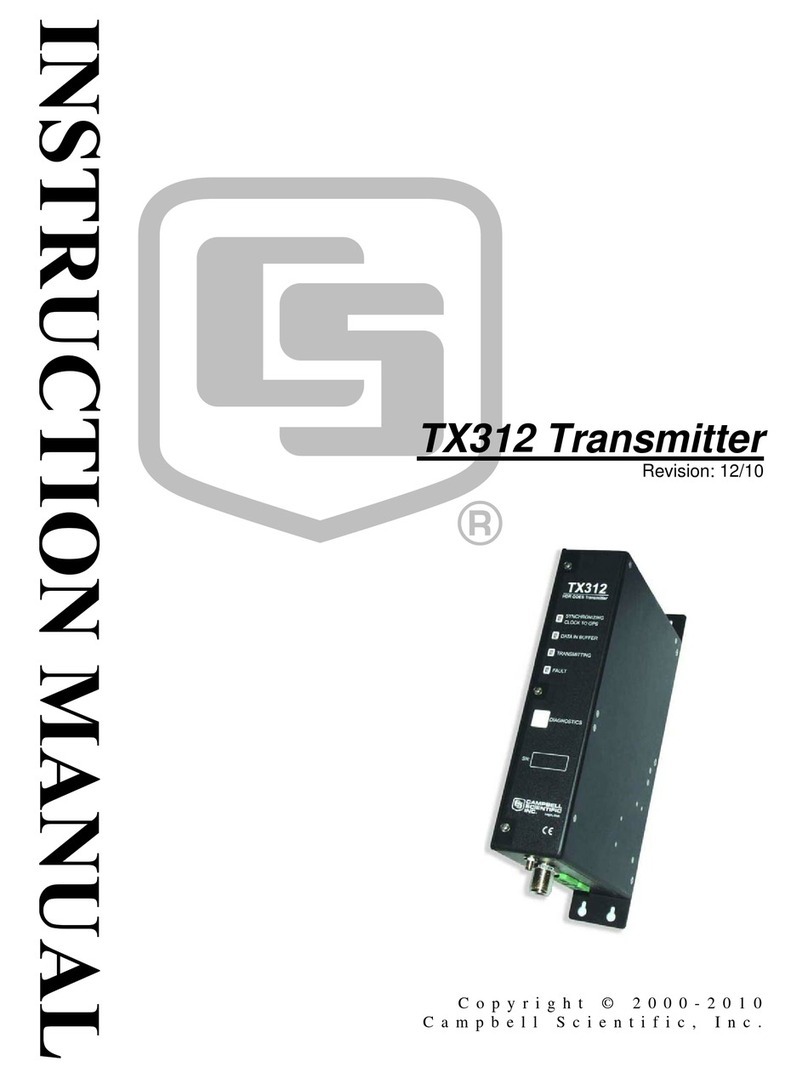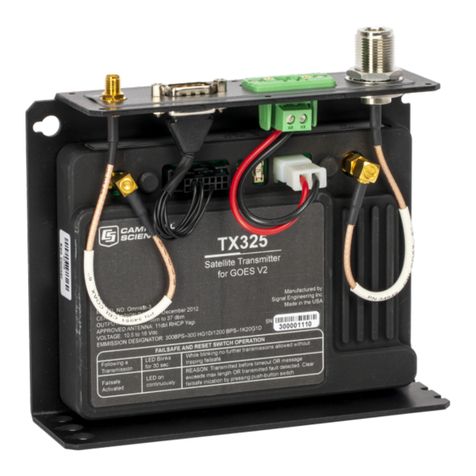Campbell TX325 User manual
Other Campbell Transmitter manuals
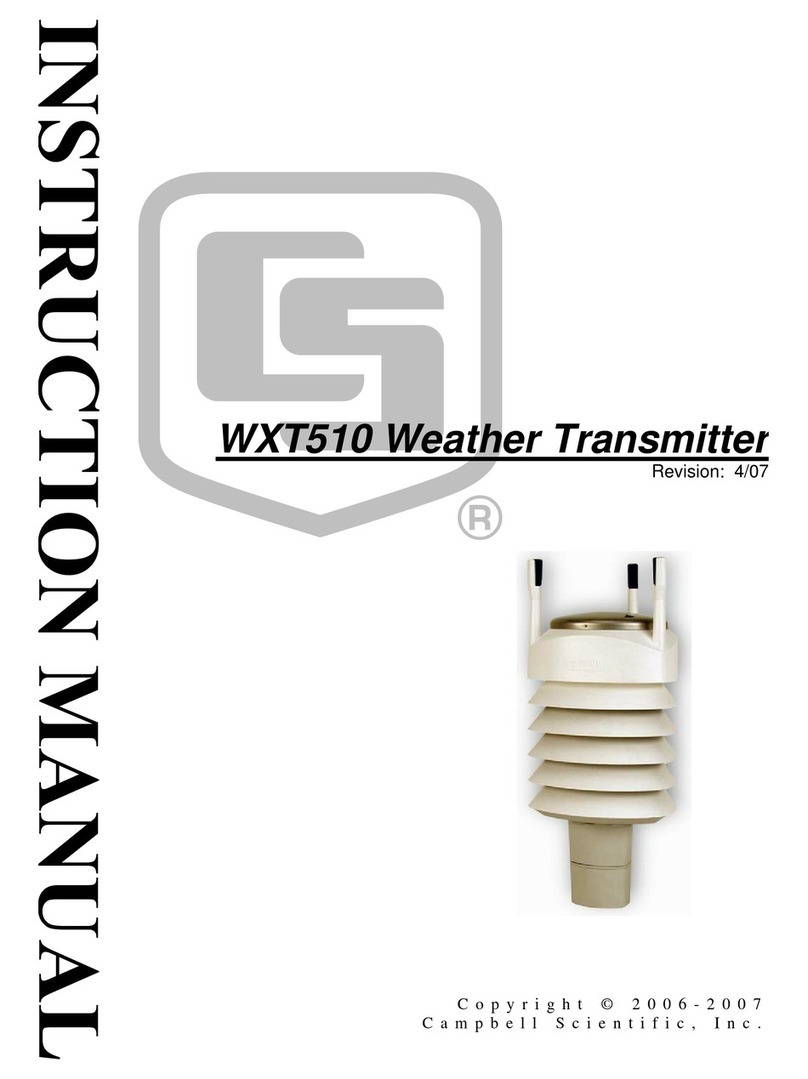
Campbell
Campbell WXT510 User manual

Campbell
Campbell SAT HDR GOES User manual
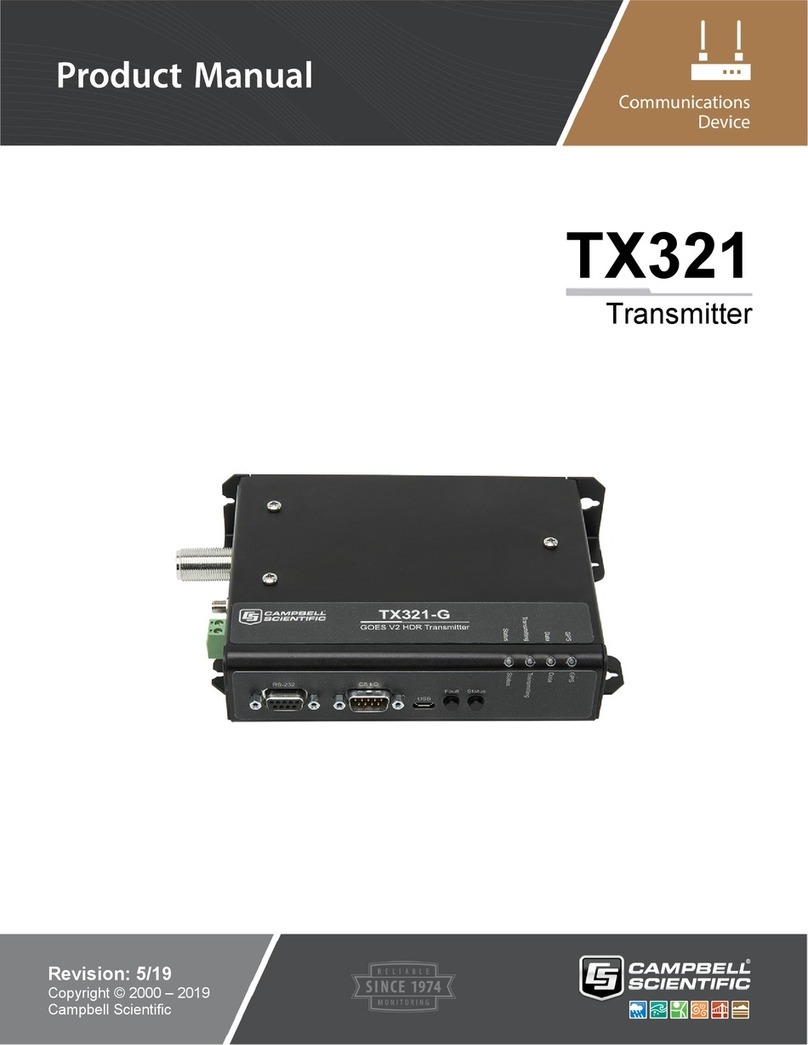
Campbell
Campbell TX321 User manual
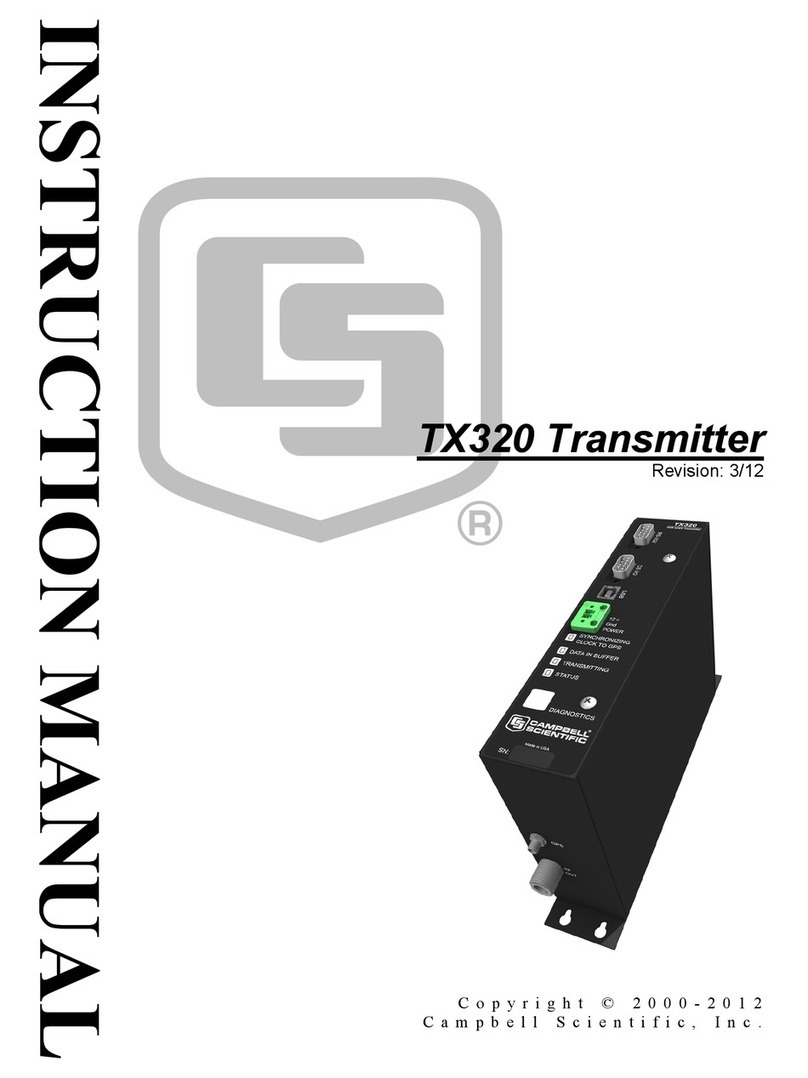
Campbell
Campbell TX320 User manual
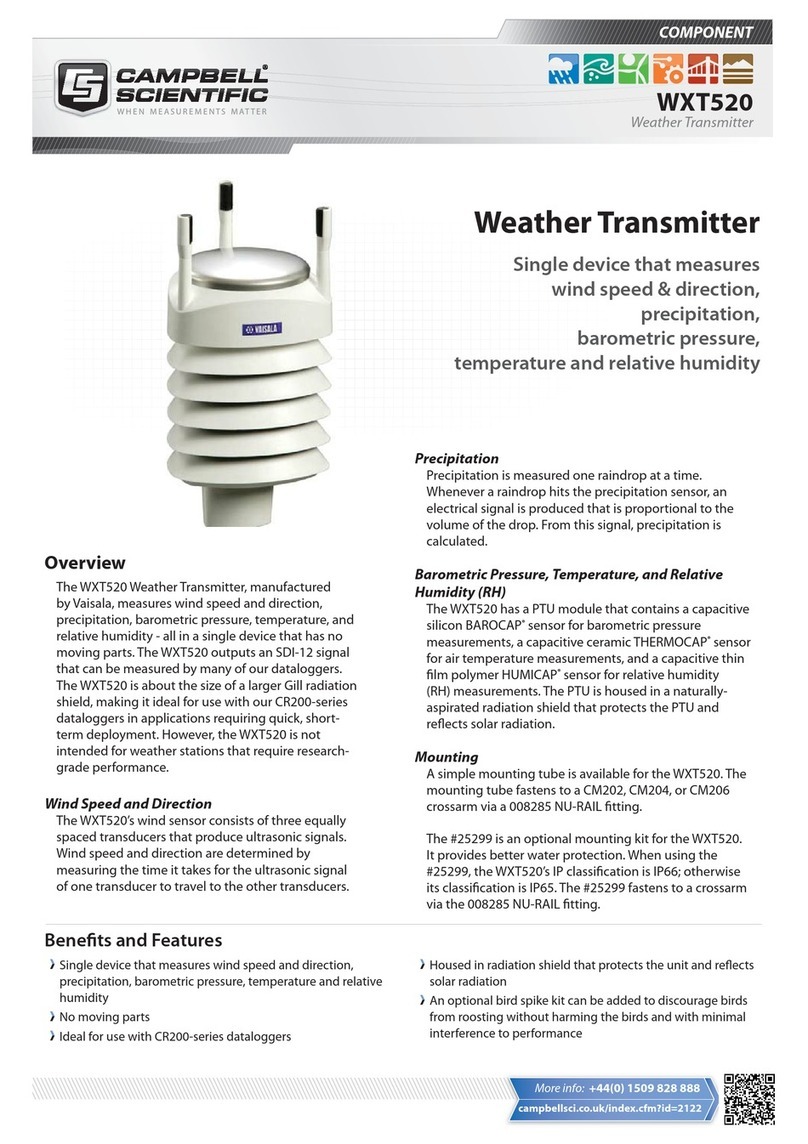
Campbell
Campbell WXT520 Owner's manual

Campbell
Campbell WXT520 User manual
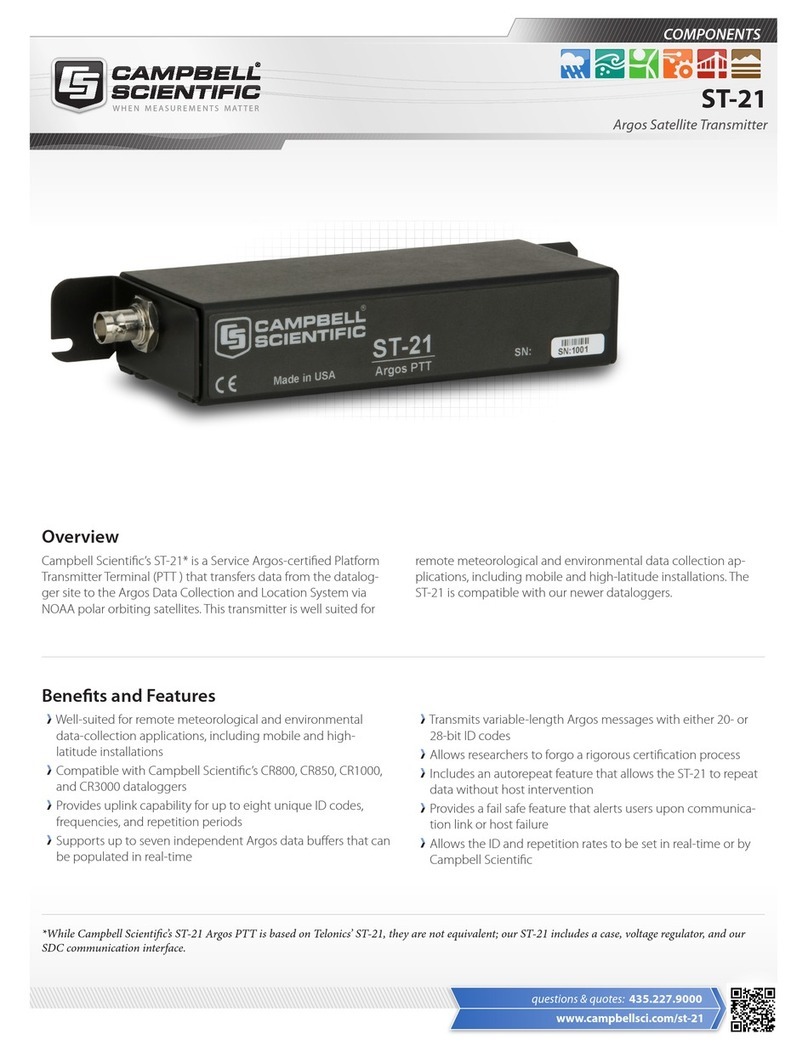
Campbell
Campbell ST21 Owner's manual
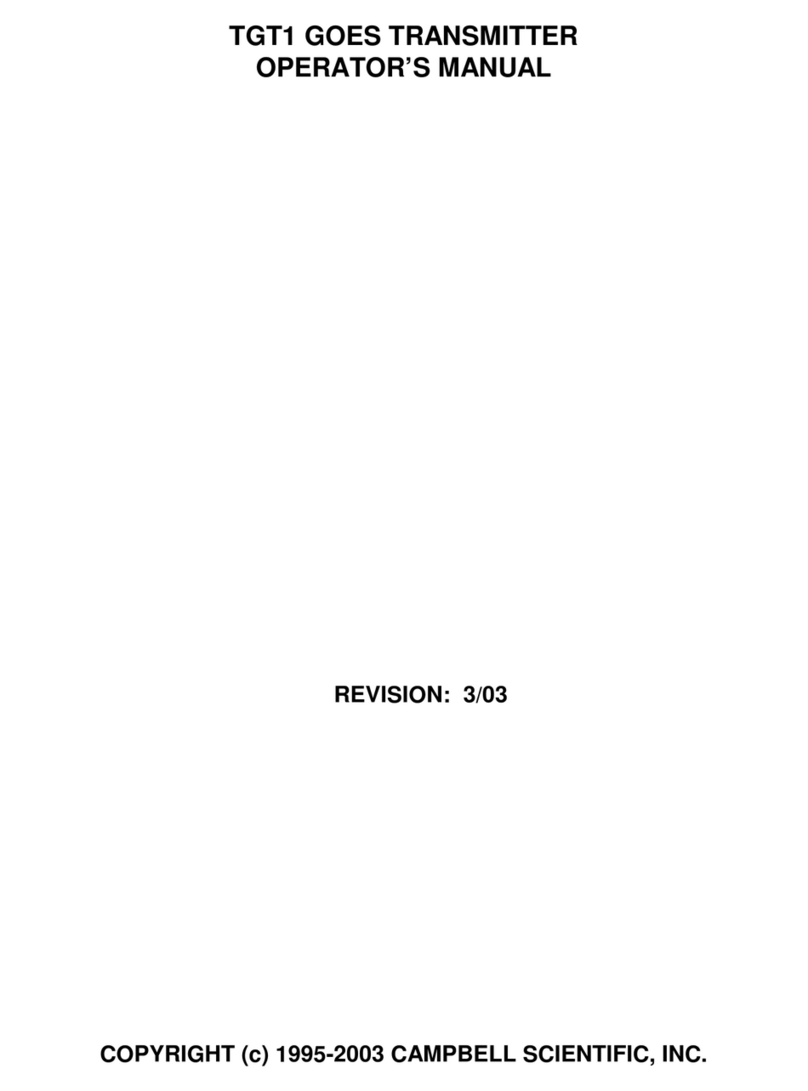
Campbell
Campbell TGT1 User manual
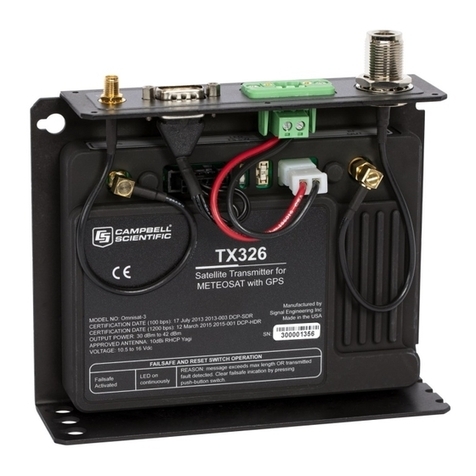
Campbell
Campbell TX326 User manual

Campbell
Campbell WXT520 User manual
Popular Transmitter manuals by other brands

Geo
Geo Web Pack quick start guide

Inovonics
Inovonics EchoStream EN1210W installation instructions

IKONNIK
IKONNIK KA-6 quick start guide

Rohde & Schwarz
Rohde & Schwarz SR8000 Series System manual

Audio Technica
Audio Technica UniPak ATW-T93 Installation and operation

NIVELCO
NIVELCO EasyTREK SCA-300 Series Programming manual

